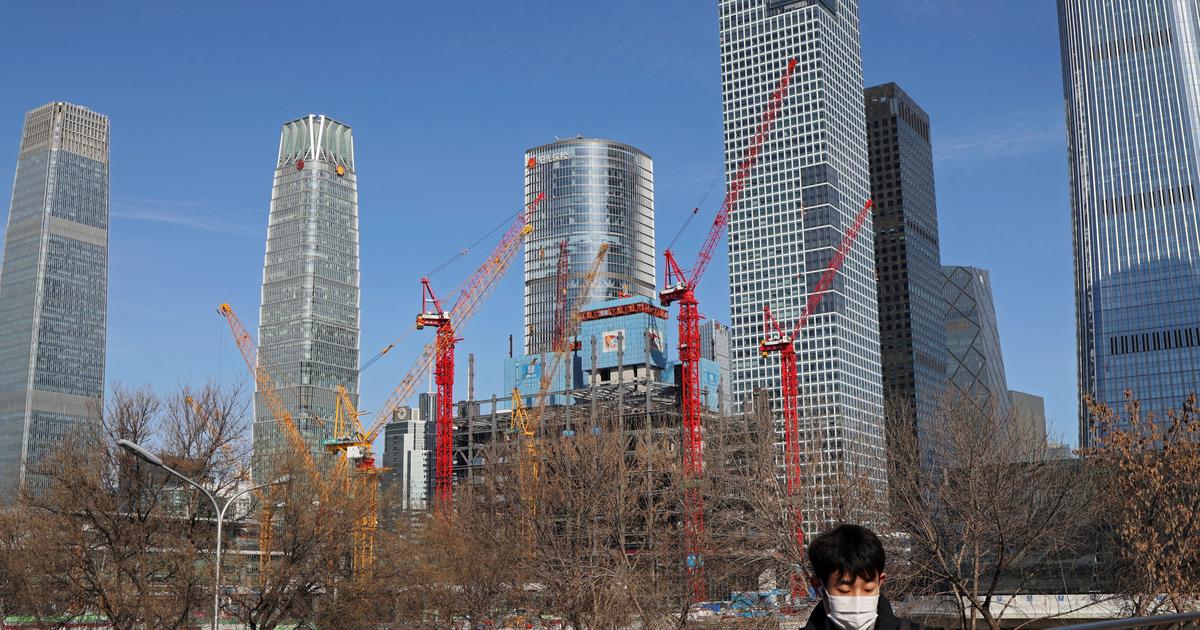Enlarge image
Construction site of a municipal housing company in Hamburg (archive image)
Photo: Daniel Reinhardt / DPA
So far, building and climate protection have not gotten along very well. On the contrary: the construction industry is one of the largest greenhouse gas emitters in the world. According to a UN report, the construction and building industry is at a record level in terms of greenhouse gas emissions. The sector accounts for 38 percent of global CO₂ emissions. This is also due, for example, to the large amounts of carbon dioxide that are generated during the production of concrete - the raw material cement releases more CO₂ than all global air traffic.
A new study also shows that there is great potential for climate protection when building new buildings. According to a calculation by the Institute for the German Economy in Cologne (IW), 1.9 million tons of CO₂ could be saved annually by publicly awarding contracts to the construction industry. The state is one of the largest builders in Germany. The potential CO2 savings correspond to the amount of greenhouse gases that domestic German air traffic causes every year, as the editorial network Germany (RND) reports.
The IW calculation is based on the fact that 30 percent carbon-neutral steel and plastic are used in the construction projects.
Steel is used in buildings, for example, as a carrier material and is also used in concrete as what is known as reinforcement.
The steel industry is the branch with the largest CO₂ emissions in the industry.
According to the Federal Ministry of Economics, the production and processing of the material accounts for around six percent of all German greenhouse gas emissions.
Climate-friendly procurement often does not play a role
"Many federal states have set themselves the goal of making public administrations climate-neutral," said Thilo Schaefer, head of the competence field Environment, Energy and Infrastructure at the IW. For example, it is about the vehicle fleet and the buildings. "Climate-friendly, public procurement, on the other hand, often does not even appear in the considerations, although that is at least as great a lever."
The IW experts are primarily concerned with steel: According to their calculations, 30 percent of the steel used in public contracts would have to be produced in a climate-neutral manner by 2030 in order to achieve the emissions target.
The same applies to plastic, which is required for pipes or windows, for example.
According to the team, a binding quota for green steel and green plastic of this amount would burden the state budget with a total of 512 million euros.
Building frenzy in China and India
The study emphasizes that state tenders for construction projects in particular could be aimed at protecting the climate.
As a rule, private investors primarily want to save costs and erect new buildings quickly and cheaply.
In addition, the technology for manufacturing climate-friendly building materials such as steel and concrete is still in its infancy in Germany.
The steel industry is currently working on pilot plants that run on green hydrogen instead of coal and coke.
Funding could therefore be an important signal that it is worth investing in such new technologies and that they are being used.
Globally, however, such efforts would be nothing more than a start.
Measured in terms of cement production, it is above all countries like China and India that release considerable CO₂ emissions through construction activities.
joe / AFP









